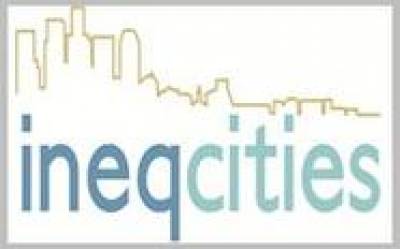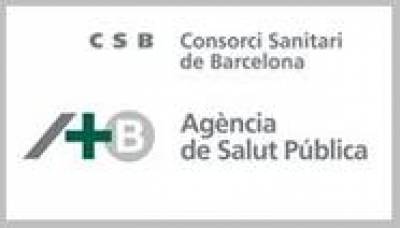Each of the following maps demonstrates the heterogeneous nature of neighbourhoods in Rotterdam in terms of socio-economic characteristics. These maps highlight distinct patterns of geographical segregation within Rotterdam, as areas most highlighted by deprivation vary largely whether one examines Rotterdam by unemployment, manual worker density or educational attainment. However, a slight North-South gradient is apparent in Eastern Rotterdam. More affluent areas are found in North-Eastern Rotterdam, as well as in Westernmost Rotterdam, as shown by the maps of unemployment and primary education. Socio-economic indicators were derived using data from the 1996 - 2008 Enquete Beroepsbevolking (Labour Force Surveys) and the 2001 Gemeentelijke basisadministratie (Administrative Register Data). These data were provided by the Centraal Bureau voor de Statistiek (Statistics Netherlands).
The following socio-economic indicator maps are colour-coded; high concentrations of a socio-economic characteristic are represented by brown tones, which lighten as the concentration reduces. Intermediate concentrations of a socio-economic characteristic are represented by the white tone. The lowest concentrations are represented by green tones. Sparsely populated and uninhabitable areas were excluded from the analysis, and are shown in stripes. The following maps of Rotterdam have been amplified in order to make the small areas more visible. For further information about how these maps were created, please visit the methodological section of the Atlas. Click on each image for a full-screen view of the maps below.
Unemployment
Area Distribution of Unemployment in Rotterdam
This map shows the distribution of unemployment throughout Rotterdam. High levels of unemployment (represented by brown tones) are clustered in the centre of Eastern Rotterdam. From these areas, high unemployment decreases gradually to the North and South but remains relatively high, as shown by the light brown and brown areas throughout Eastern parts of the city. Intermediate levels of unemployment (shown in white) are commonplace in the far East of Rotterdam. Areas with the lowest levels of unemployment (shown in dark green) are dispersed throughout Rotterdam, yet large areas are observed in Westernmost Rotterdam and in the North-East. This map demonstrates a slight North-South gradient, as levels of unemployment are lowest in the North-West and North-East of Rotterdam (shown in dark green), whilst the highest levels of unemployment are most apparent in the South-East (shown in dark brown).
Manual Workers
Area Distribution of Manual Workers in Rotterdam
This map shows the distribution of manual worker density throughout Rotterdam. The pattern of manual worker density differs from the map of unemployment shown above. There is no longer a small cluster of brown areas in the centre of Eastern Rotterdam. Areas with the highest proportions of manual worker density are now dispersed throughout Eastern Rotterdam. In addition, the highest density of manual workers is seen in Westernmost Rotterdam. The lowest concentrations of manual workers density (shown in dark green) are exhibited in the centre of Eastern Rotterdam. This map demonstrates that social deprivation, as measured by manual worker density, does not exhibit clear spatial patterns in Rotterdam.
Primary Education
Area Distribution of Adults with Low Educational Attainment in Rotterdam
This map shows the area distribution of adults that completed formal schooling at the primary level in Rotterdam. The geographical distribution of low educational attainment is comparable to that demonstrated by unemployment, but not to manual worker density. Low educational attainment is highest in central and Southern areas of Eastern Rotterdam (shown in dark green). Areas least burdened by low educational attainment (shown in dark green) are primarily found in the North-East of Rotterdam and in Westernmost Rotterdam. As with unemployment, the spatial distribution of this map suggests a slight North-South gradient, as areas most burdened by low educational attainment reside in the South-East of Rotterdam (shown in brown tones), whilst those least affected are clustered in the North-West and North-East of the city (shown in green tones).
University Qualifications
Area Distribution of Adults with University Qualifications in Rotterdam
This map shows the area distribution of the proportion of adults that have obtained university qualifications in Rotterdam. Whilst demonstrating similar patterns to the map of low educational attainment above, there are some significant differences. For example, Western Rotterdam contains areas that are amongst those least burdened by low educational attainment, but at the same time, these areas exhibit relatively low levels of university qualifications. Furthermore, intermediate levels of university qualifications (shown in white) are now found in the North-East of the city. The centre of Eastern Rotterdam is now largely brown, representing the highest proportions of university qualifications in the city. Thus, social-economic deprivation is concentrated in the Southern section of Eastern Rotterdam, whilst affluence is most evident in the centre of Eastern Rotterdam. However, this map does not display clear spatial patterns of geographical segregation, according to university qualifications in Rotterdam.
 Close
Close





